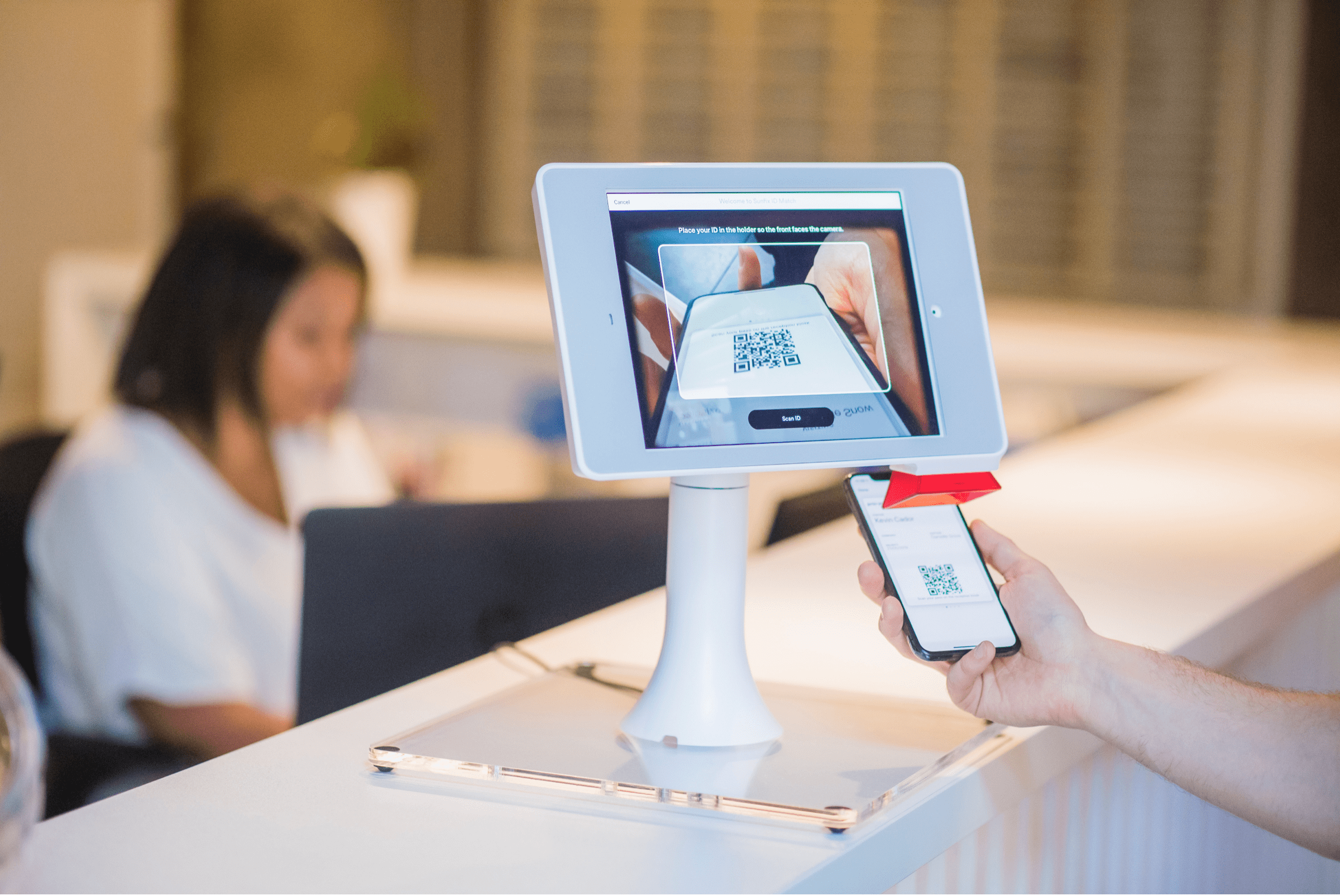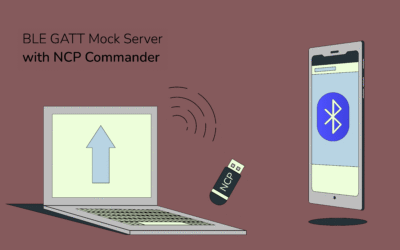Table of Content
- What Is The Matter Protocol?
- Matter Smart Home Device Types
- Matter Standard Provides Seamless Connectivity
- Multiple Ecosystems Co-Exist With Matter
- Matter Bridge And Routers
- Matter Fabric
- Matter Controllers
- Fabric Compatibility
- Matter Device Commissioning
- Matter Multi-Admin Commissioning
- Building Matter Smart Home Devices And Matter Apps For Specific Functionality
- Developing Matter Smart Home Devices With Unique Features
- Build Android Matter Apps With Google Home
Building Matter devices with the new Matter protocol represents an exciting milestone in the IoT industry, as major players unite to achieve seamless connectivity and plug-and-play interoperability for smart homes.
The Matter protocol heralds a new era in IoT wireless communication, offering a trusted ecosystem with robust encryption standards and a strong commitment to securing users’ privacy and confidentiality.
Backed by industry leaders like Google, Amazon, and Apple, the Matter smart home standard fosters a unified connectivity ecosystem. This collaborative, multi-vendor environment enhances device compatibility and accelerates the adoption of smart home technologies.
Matter smart home devices proudly display the Matter badge—a symbol of certified connectivity that guarantees seamless interoperability, reliability, and forward compatibility. This badge helps users confidently identify trusted Matter-certified products.
What Is The Matter Protocol?
The matter protocol is an application layer over an IPv6 network layer and data model designed to unify devices using different communication protocols, enabling seamless communication across platforms. It operates on top of the IP network stack, serving as a transport layer.
Matter acts as a common layer that connects devices over its supported network protocols. Devices are discovered, commissioned, and provisioned using IPv6-based networks, such as Wi-Fi, Thread, or Ethernet for operation, while Bluetooth Low Energy facilitates setup (commissioning).

Matter Smart Home Device Types
Matter 1.4 Devices
The release of Matter 1.4 in November 2024 represents a significant advancement in the smart home ecosystem, introducing enhancements that improve device interoperability, network reliability, and energy management. Informed by real-world feedback and the collaboration of hundreds of member companies, this update reinforces Matter’s role as a cornerstone of IoT innovation.
Enhanced Network Infrastructure
- Home Routers and Access Points (HRAP):
Matter-certified HRAP devices combine Wi-Fi access points and Thread Border Routers into a unified infrastructure. These devices simplify the setup of Thread networks by securely storing and sharing network credentials, reducing fragmentation, and supporting seamless device addition.
Enhanced Multi-Admin Support
- Streamlined Device Sharing:
Multi-Admin functionality allows users to connect devices to multiple smart home systems with single-user consent. This feature simplifies management by enabling automatic connections for both existing and new devices.
Energy Management Innovations
- Expanded Device Support:
New energy-focused devices enhance sustainability, including solar panels, batteries, heat pumps, and water heaters. Features like energy usage forecasting, load balancing, and optimized scheduling offer greater efficiency and cost savings. - Thermostat and EVSE Enhancements:
Updates to thermostat clusters enable scheduling and automation, while EVSE support introduces user-defined charging preferences for convenience and reduced energy costs.
Occupancy Sensing and Device Optimization
- Improved Sensors:
Enhanced occupancy sensing now supports radar, vision, and ambient technologies, with customizable sensitivity and event-based reporting for more precise control. - Battery-Powered Devices:
New protocols like Long Idle Time (LIT) improve battery life and communication for intermittently connected devices.
Matter 1.4 reflects a continued commitment to advancing smart home experiences with innovations in infrastructure, usability, and sustainability. It paves the way for future enhancements that make smart homes more integrated and intuitive than ever.
Matter 1.3 Devices
With the release of Matter 1.3 in May 2024, the standard continues to push the boundaries of smart home technology by introducing support for an array of new device types and enhancing user experience with improved energy and water management capabilities. This update extended the interoperability and functionality of Matter-enabled devices, making smart homes more intuitive and environmentally conscious.
New Supported Matter Devices:
- Major Kitchen and Laundry Appliances: Matter 1.3 brings smart capabilities to essential household appliances. Microwave ovens allow users to control cooking times and power levels and receive notifications like ‘food ready’ or ‘end of cycle.’ This release also supports advanced features for ovens and cooktops, such as temperature control and mode settings for different cooking methods. Laundry dryers are included, complementing the previously supported washers, with functionalities to set drying modes and receive status updates.
- Enhanced Water and Energy Management: The specification introduces tools for better management of energy and water usage, aligning with modern needs for sustainability. Homeowners can now integrate electric vehicle charging equipment with adjustable settings for efficient energy use and leak and freeze detectors to prevent water wastage and damage.
Entertainment and Media Enhancements:
- Matter 1.3 enhances media device functionalities, improving how televisions and other display devices interact within the smart home ecosystem. New features support richer notifications and more interactive media experiences, allowing seamless integration of entertainment devices with other home systems.
User Experience and Technical Advancements:
- Scenes and Command Batching: These new features allow users and developers to create more dynamic environments. Scenes enable the setting of predefined device states that can be activated simultaneously, and command batching reduces communication delays, enhancing the responsiveness of devices within the network.
- Developer and Network Enhancements: Improvements in network commissioning include better device reporting and diagnostics, which are crucial for maintaining robust and secure connections across Matter devices.
Matter continues to evolve with these significant updates, ensuring that users receive cutting-edge functionalities and contribute to a more sustainable and efficient living environment.
Matter 1.3’s focus on integrating major home appliances and enhancing energy management paves the way for the next generation of smart homes, where convenience and conservation go hand in hand.
Matter 1.2 Devices
Matter 1.2 Matter specification was released in October 2023. It supports nine additional device types, enhancing interoperability, simplicity, and security. These device types are:
- Refrigerators: In addition to monitoring temperature, it’s compatible with deep freezers, wine fridges, and kimchi fridges.
- Room Air Conditioners: These are now supported, differing from previously included HVACs and thermostats.
- Dishwashers: Features include remote start, progress notifications, and alarms for various operational issues.
- Laundry Washers: Users receive notifications like cycle completion.
- Robotic Vacuums: Alongside standard features, they have cleaning modes and detailed status updates.
- Smoke & CO Alarms: These offer notifications, alarm signals, battery alerts, self-tests, and concentration sensing for CO.
- Air Quality Sensors: These sensors report on multiple pollutants and provide AQI data based on their location.
- Air Purifiers: They leverage Air Quality Sensor data and include filter status notifications, among other features.
- Fans: Now a distinct device type, they offer various modes, airflow direction changes, and speed adjustments.
Matter 1.1 Devices
The Matter 1.0 specification was released in September 2022. The Matter Device library specification defines the requirements for Matter Device types and lists Matter Smart Home devices with different functionalities included in the specification:
Lighting
- On/Off Light
- Dimmable Light
- Color Temperature Light
- Extended Color Light
Smart Plugs/Outlets and other Actuators
- On/Off Plug-in Unit
- Dimmable Plug-In Unit
- Pump
Switches and Controls
- On/Off Light Switch
- Dimmer Switch
- Color Dimmer Switch
- Control Bridge
- Pump Controller
- Generic Switch
Sensors
- Contact Sensor
- Light Sensor
- Occupancy Sensor
- Temperature Sensor
- Pressure Sensor
- Flow Sensor
- Humidity Sensor
- On/Off Sensor
Closures
- Door Lock
- Door Lock Controller
- Window Covering
- Window Covering Controller
HVAC
- Heating/Cooling Unit
- Thermostat
- Fan
Media
- Basic Video Player
- Casting Video Player
- Speaker
- Content App
- Casting Video Client
- Video Remote Control
Generic
- Mode Select
Utility Devices
In the Matter specification, utility devices are special-purpose devices designed to deliver foundational services within a Matter network. Unlike full-fledged application devices, utility devices underpin essential network functionalities such as over-the-air (OTA) updates, power source reporting, introducing non-Matter protocols via the Aggregator, and bridging other devices with the Bridged Node.
Some notable examples include the Root Node, which outlines device capabilities; the Power Source, detailing power information; the OTA Requestor/Provider for managing OTA updates; the Aggregator for incorporating non-matter protocols over Matter networks; and the Bridged Node, representing a non-matter device bridged onto the network.
Utility devices serve as the backbone of a Matter network. They allow manufacturers to allocate functionalities across various endpoints on a device, thereby solidifying the network’s infrastructure and intrinsic features.
Matter devices also support over-the-air (OTA) updates, a critical feature that enhances security, functionality, and longevity. These updates ensure devices remain current, contributing to device sustainability and user convenience while reducing electronic waste.
Matter Standard Provides Seamless Connectivity
The Matter standard is very convenient for consumers, allowing any Matter-enabled app to interact with any device in any Matter ecosystem. This common application layer delivers device interoperability.
Matter’s unified application layer lets you control compatible devices from multiple “home” apps and voice assistants—Google Home, Apple Home, Alexa, and more—using the same commissioning flow and controls. In practice, cross‑app interoperability depends on each ecosystem’s Matter version (for example, Google Home currently implements Matter 1.0, so newer device types like refrigerators or washers may not appear there until it updates). Until then, you can continue using each device’s native app alongside your Matter‑enabled home app.
Multiple Ecosystems Co-Exist With Matter
Matter multi-admin features allow end users to choose which ecosystems to use. Users can connect devices to more than one ecosystem, extending device control and simultaneous controls from multiple controllers without relying on cloud-to-cloud. In addition, users can control Matter devices within any ecosystem.
Matter Bridge and Routers
Matter devices can communicate directly with other devices (Wi-Fi or Thread) and control devices from an app, bridge (hub), or router. For example, devices working with Zigbee, Z-Wave, or BLE mesh can interact with Matter using a Matter bridge.
Matter allows any non-Matter network device (Zigbee, BLE mesh, Z-Wave) to integrate with a Matter fabric (ecosystem), exposing devices to nodes in the Matter fabric. Matter bridges perform the translation for device communication to take place.
Thread Border Routers (Transport Layer)
While bridges translate Zigbee/Z‑Wave to Matter, Thread border routers live in the transport layer—they carry Matter packets in and out of a low‑power Thread mesh. Any always‑on, Thread‑capable hub or Wi‑Fi router can act as a border router (HomePod Mini, Nest Wifi Pro, Echo 4th Gen, Eero 6E, etc.), bridging the Thread mesh into your IP network.
Matter bridges themselves are typically SoC‑based gateways that embed the Matter SDK and security features, enabling legacy and non‑Matter devices to participate in the unified ecosystem.
Matter Fabric
A Matter fabric or ecosystem is a trusted network in a home that enables device communication through a common set of cryptographic keys.
Bridges follow the Matter standard commissioning to join a Matter fabric with other networks (Zigbee, Z-Wave, etc.), discover the Matter-supported devices following a specified method, perform a matching process, and add endpoints in Matter. Finally, the controllers in Matter control the device in the other network (Zigbee, Z-Wave, etc.).
Matter Controllers
IoT developers can build controller functionality into any device. For example, a smart home can have more than one controller. As users purchase different devices and technologies with special features, these devices will have their own controllers. A device might also be controlled by several controllers.
For example, a user might use a Google Home app (multi-admin feature) to control a Matter device setup within the Alexa app. Integration of services will simplify customer experiences and bring a lot of innovation to the market. (Note: Mobile phones are initially only for setting up devices and do not work as controllers.)
Fabric Compatibility
The Matter standard unifies smart home ecosystems and devices, creating compatibility. Matter does not require the product to have an app to operate, allowing devices to be natively integrated into Google Home, Home Kit, or other ecosystem apps. However, if products have unique capabilities, developers can build native Matter apps to differentiate their services (specialized services apps).
Bridge functionality is being developed to bring older devices to Matter. Using bridges (hubs) provides the translation that supports Matter and provides continuity for those devices. Manufacturers are in the process of developing unified SDKs to create bridges that incorporate older devices into Matter.
The Connectivity Standard Alliance is open to any company interested in developing new device types (segments). It invites companies to build apps and devices and includes them in developing specifications and test cases to prepare them for future releases.
Bridges and devices are typically implemented on system‑on‑chip (SoC) platforms that include the Matter SDK, built-in security features, and vendor support. In Thread‑based networks, Thread border routers handle the mesh‑to‑IP translation required for Matter communication. IoT industry players are actively developing SDKs that conform to the latest Matter specification.
Matter Device Commissioning
Adding or commissioning a new device into a Matter fabric begins when the controller app invokes the commissioning API and asks the user to prove possession (for example, by scanning a QR code or entering a product code). The user then signs in to their ecosystem account (Google Home, Apple Home, etc.), selects the home to which the device should be added, and grants control permissions.

During commissioning, the ecosystem app uses Bluetooth Low Energy as a secure, out‑of‑band channel to discover and connect to most of the new devices. The app listens for the device’s BLE advertisements, establishes an encrypted pairing session, and then automatically pushes the Wi‑Fi or Thread network credentials over that secure link—you simply tap “Connect” in the app and the heavy lifting (crypto handshake, network‑key exchange, provisioning) happens behind the scenes. NFC works the same way: tap your phone to the device’s NFC tag and it instantly transmits the commissioning payload without any manual credential entry.
New in Matter 1.4.1:
- Embedded Terms & Conditions (Enhanced Setup Flow)
Commissioning can now seamlessly display and capture user acceptance of any manufacturer T&C within the standard onboarding UI—no need to jump to a custom app just to sign off on regional or privacy agreements.
- Multi‑Device QR Codes
A single QR code can now encode a full multi‑pack of devices (for example, your four‑bulb box), commissioning them all at once instead of one code per device.
- On‑Tag NFC Setup
Everything in the QR payload (setup data, credentials, commissioning instructions) can now reside in an embedded NFC tag—ideal for fixtures or recessed hardware where a printed QR might be hidden.
Matter Multi-Admin Commissioning
You can also commission a device into a developer’s custom fabric thanks to Matter’s multi‑admin feature. In this flow, the commission request carries metadata and service‑permission grants in its callback, enabling simultaneous sharing across multiple ecosystems and apps. This lets different controllers in a home all interact with the same Matter‑enabled device.
Building Matter Smart Home Devices and Matter Apps for Specific Functionality
The Matter ecosystem opens up significant opportunities for device makers and app developers to deliver new, differentiated services within any Matter‑enabled home. While native apps aren’t required—devices can plug directly into Google Home, Apple Home, Alexa, and other ecosystem apps—building a specialized companion app still makes sense when you have unique features or services to showcase.
Rather than creating a custom SDK, developers integrate the official open‑source Matter SDK into their firmware and application code. This single SDK supports every major Matter release and lets you reuse the same code across all target ecosystems, drastically reducing time‑to‑market, development cost, and maintenance complexity.
To get started, clone the Matter SDK from GitHub, follow the quick‑start guides for your chosen SoC platform, and begin prototyping your device or companion app today.
Developing Matter Smart Home Devices With Unique Features
Product developers continue to focus on differentiating their products. The Matter standard brings many opportunities that require consideration of some aspects. First, products must have the right SoC with transmission power and receiver sensitivity to ensure reliable connectivity.
Consumers are becoming more and more sophisticated and require intelligent and intuitive solutions. We refer to Matter smart home devices with machine learning capabilities that offer smarter solutions, voice control, data-intensive, and other functionality. However, these IoT devices require faster hardware that is energy efficient and operates at the edge.
Environmental awareness is another aspect relevant to consumers, pushing manufacturers to build long-lasting IoT devices with low battery waste (lower battery replacement and longer recharging intervals) and high memory capacity that can handle firmware/software updates over-the-air (OTA).
One of the strong differentiators of Matter smart home devices is the security standards of encryption and secure end-to-end communication. These standards offer trusted connections, device identity mechanisms, access control mechanisms, and data security. These components provide confidentiality and privacy for users.
In 2023, the Aliro protocol was announced–a point-to-point protocol that employs asymmetric cryptography and credential data definition, ensuring security across diverse hardware and operating systems.
Device attestation and verification are key components of Matter’s security features. The Matter standard also features a compliant distributed ledger with a rigorous certification program, making it a trusted ecosystem.
The Distributed Compliance Ledger (DCL) serves as a secure repository for verifying device authenticity, certification status, and compliance, enhancing trust and simplifying setup for complex devices. In addition, the Matter specification has defined integrations of security functionality.
Matter developers must also consider choosing a System on Chip (SoC) with incorporated security features and PSA security certification to offer consumers a trusted experience.
Build iOS Matter Apps With Apple Home
Apple has rapidly advanced its Matter support—HomeKit now implements Matter 1.2—making it an excellent example for building native iOS Matter experiences. Using Apple’s Home framework alongside the Matter SDK, you can:
- Commission and Control: Leverage HomeKit’s built‑in commissioning UI and Matter APIs to securely discover, pair, and provision new devices into your user’s home fabric—all without manual credential entry.
- Ecosystem Integration: Once onboarded, your Matter devices appear alongside every HomeKit‑compatible accessory in the Apple Home app, and can be managed via Siri or Shortcuts.
- Multi‑Admin Participation: HomeKit’s support for multi‑admin fabrics ensures that devices you commission on iOS are simultaneously visible to other controllers (e.g., Android apps, Amazon Alexa) that support the same Matter version.
- Development Tools: Apple’s Xcode templates and sample code streamline integrating Matter endpoints into your iOS companion app. And since HomeKit is built into iOS, you can quickly prototype, test, and deploy without extra SDK installs.
For a deeper technical dive, see Apple’s WWDC session on HomeKit and Matter integration
References
[1] Matter Device Library Version 1.0, 2022-09-23 12:33:19 -0700
[2] Matter Application Cluster Specification Version 1.0
[3] Matter 1.1 — Enhancements for developers and devices
[4] Matter Application Cluster Specification Version 1.0
[5] Matter 1.2 Arrives with Nine New Device Types & Improvements Across the Board












I’ve worked on Matter enabled devices and I think this is just the beginning of true interoperability across platforms.
I’m intrigued by the seamless commissioning process described in this post! I’d love to know more about the trade-offs between BLE, NFC, and Wi-Fi commissioning methods. Have you explored using embedded development services for Matter device commissioning?
Seems like you’re looking into BLE vs NFC commissioning trade-offs? I’ve dabbled in IoT, and exploring the matter protocol is definitely on my radar for future projects.
Love this post! 🤩 Building Matter smart home devices has become increasingly important as the market shifts towards seamless connectivity. Have you explored integrating Matter-enabled devices with popular ecosystems like Amazon Alexa? I’d love to hear about your experiences! 📊💻